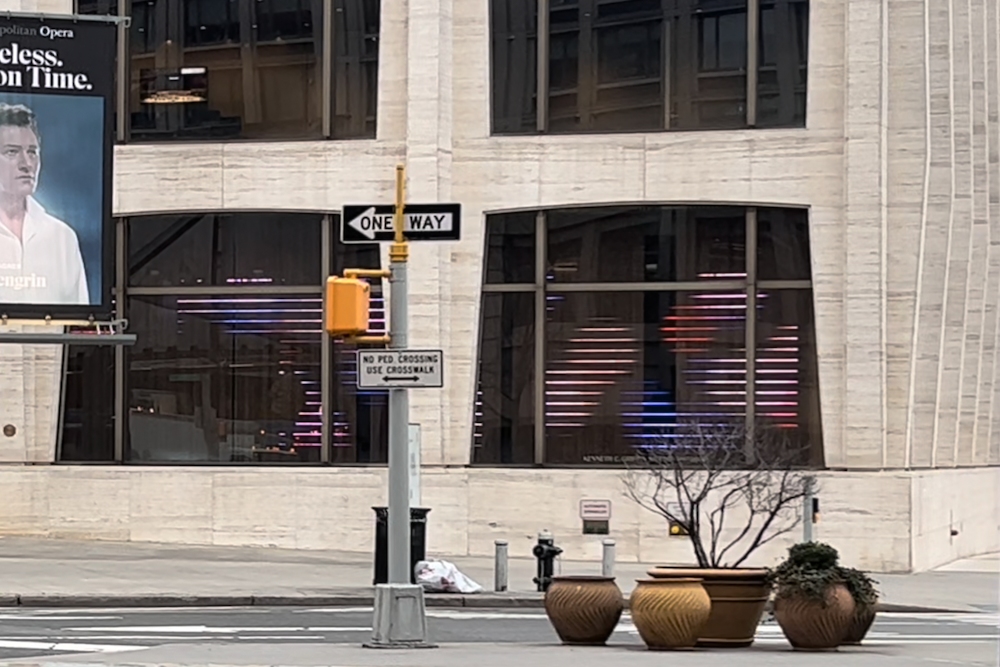
project brief & challenges—
Six thousand miniature 360° visible LED nodes combined with about a thousand colorful titanium tubes to create an impressive 3D artwork measuring 64-foot wide by 24-foot deep and 70-foot-high “Virtual Sky” artwork designed by the team at Narduli Studio.
Virtual Sky is a commissioned public artwork from the Oklahoma City Office of Arts & Cultural Affairs. Narduli Studio’s concept was to simulate the movement of the Oklahoma Sky through technology and hardware. The artwork is installed behind the glass façade and suspended from the ceiling of two impressive 90- and 60-foot-high atria of the brand-new Oklahoma City Convention Center and is visible day and night from the new Scissortail City Park.
The designers at Narduli and LED engineers of 5TEN collaborated well over a year to research and develop the best possible LED solution that would meet nearly all parameters; a high brightness, 360° visible, individually controllable and full-color pixel node. Its location required an extremely durable and smartly engineered structural and electrical system to install overhead and integrated with the existing architecture.

approach—
A custom solution was the best pathway, and after an intense design engineering phase the proof of concept was revealed via a prototype. The optic solution, electrical and power concept, the integrated cooling system, and heat dissipation solution was tested along with all other control processing electronics and mechanics of the solutions. In addition, we evaluated the titanium colors and ensured the overall aesthetics worked well together.
Due to the rapid on-site construction progression, the client requested to prepare the documentation set ahead of time, and ahead of prototyping approval. The power, data, and structural infrastructure were installed above the ceiling panels and therefore had to be in place much earlier than the artwork. We created a system architecture that enabled the long-range power distribution, and the concept solution was tested and reviewed for validation by structural engineer McLaren and electrical safety firm Certifigroup.

Solution—
Once the prototype was approved – virtually due to Covid19 – and the documentation and drawing sets signed off, the technical team hit the ground running to communicate all necessary systems infrastructure that had to be integrated into the building architecture, which was well underway.
In close collaboration and coordination with our fabricator, we made sure that the aesthetic and the mounting mechanism of the titanium cylinder strands matched LED strands.
Though Covid19 made manufacturing and logistics much more challenging, hundreds of strands with nearly 4000 LED nodes in the large atrium area and 1200 nodes in the small atrium with vertical spacing between nodes at ~2.5 foot were installed in a matter of three weeks with an ice storm as a bonus challenge.
Due to the custom nature of the concept, we coordinated and supervised the installation with expert riggers to install the art pieces at 60ft and 90ft height with a special reach master lift.
With the advice from media playback consultant Mode Studios, we supported the procurement and systems set up for the content playback devices together with all other necessary communication and distribution equipment. Narduli’s generative content was programmed and uploaded into a custom Touch Designer and Universe solution and we supplied the end-client an iPad interface with presets to allow switching between the artist looks and concepts on the artwork.




















